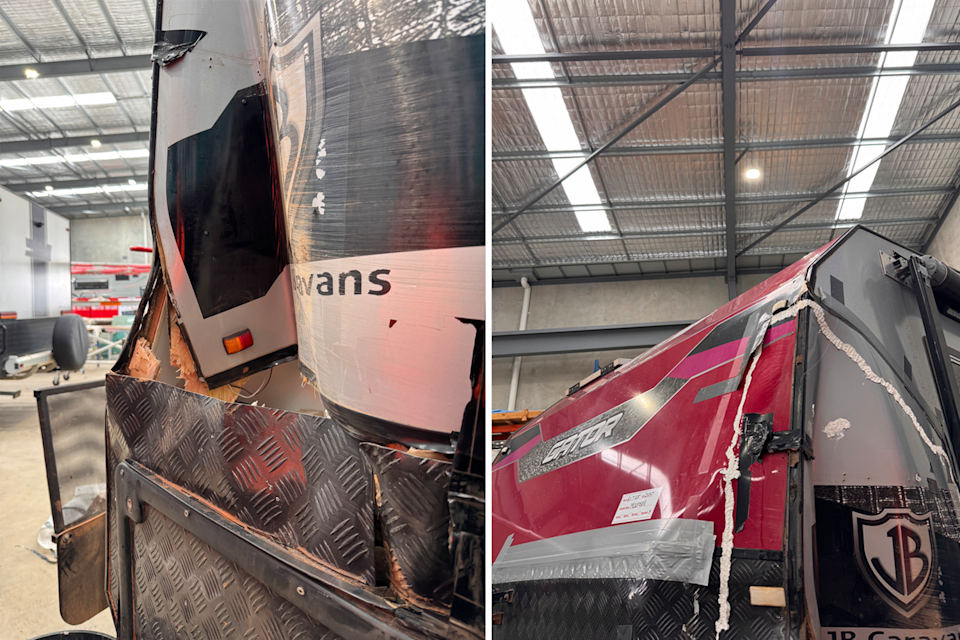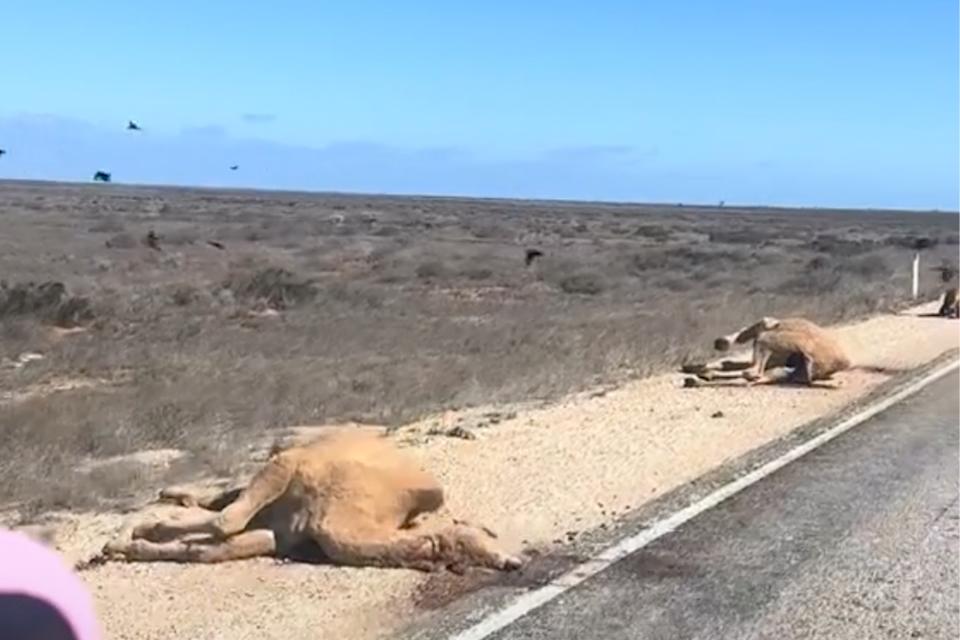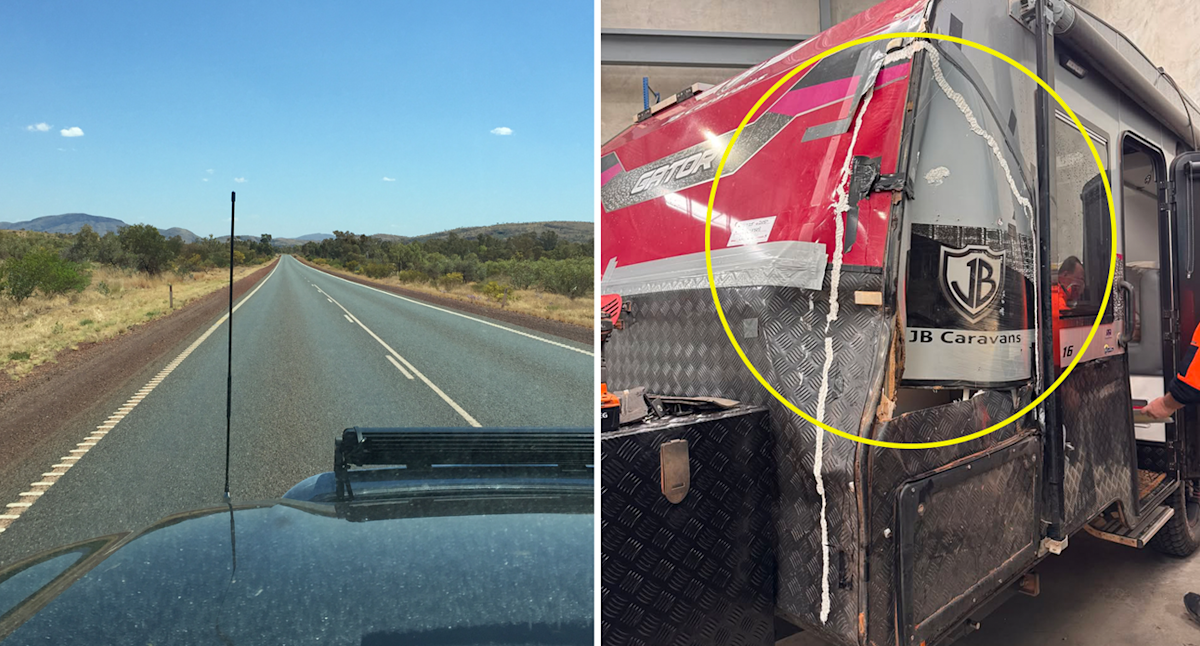Travellers hitting the road in the Australian outback have been reminded about some of the less expected hazards they can encounter in remote parts of the country. One “shocked” caravan owner found that out the hard way after a fatal collision led to some costly recent repairs.
His van is currently in the workshop in Western Australia as tradies put the finishing touches on repairs after he collided with a camel in northern parts of the state recently.
“You don’t get surprised when people say it,” a worker at RV Solutions, the caravan repair shop south of Perth, told Yahoo News about customers coming in following such accidents.
The business has had a repair job from a camel as well as an emu collision this year.
“Everyone drives back from up north where there are big, long roads with lots of wildlife around,” the worker said.
“The guy was pretty shocked,” she added. “I asked if the camel was OK, and no, the camel was not OK.”
The company shared pictures on social media over the weekend showing other drivers what it looks like “when a caravan meets a camel”. In this case, the vehicle being towed needed its front end to be rebuilt.
Related: Caravan repairer warns over ‘common’ door locking trick

The camel was reportedly killed in the accident. Source: RV Solutions/Facebook
Because they occupy an area far away from most Australian cities, feral camels are an often forgotten piece of Australia’s invasive species problem.
Earlier this year, one traveller doing a lap around the country shared his surprise when he came across five dead camels on the side of the road while driving along the Eyre Highway near Eucla.
“You don’t normally see something like that,” the Melbourne man told Yahoo News in May.
The same road was closed in both directions back in 2021 when a road train collided with two camels, causing it to jack-knife and block the highway in an incident which killed both camels.

Dead camels after being hit by a road train in the Australian outback. Source: TikTok/johndoh27
‘Little-noticed’ feral camels cause millions of dollars in damage in Australia
Camels were first brought to the area of Eucla in 1838 to help explore central Australia. They played an essential role in transporting supplies through the harsh terrain and were later used in Western Australia during the gold rush.
Camels are highly mobile and can forage over 70km a day in groups that can include hundreds. While most females only give birth to one calf every couple of years, they can live up to 50 years and have very few threats in Australia other than human interaction. The species is well-suited to the outback environment, and as a result, Australia is home to the largest wild population of Arabian camels in the world, according to Pest Smart.
“The Australian environment didn’t evolve to cope with camels, and they cause enormous damage to desert ecosystems,” Dr Carol Booth from the Invasive Species Council of Australia told Yahoo News recently. “Because they are in remote areas, the damage is very little noticed and not given a lot of attention.”
In 2009, it was estimated by researchers at the CSIRO that the annual economic cost of camels was about $11 million a year. According to the Northern Territory government, when left unchecked camel populations can double every eight to 10 years, so arguably the cost has continued to grow.

Discover more of our environment coverage.

